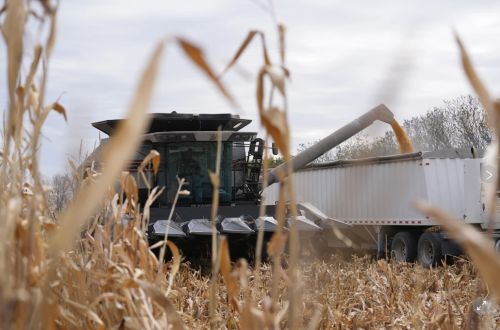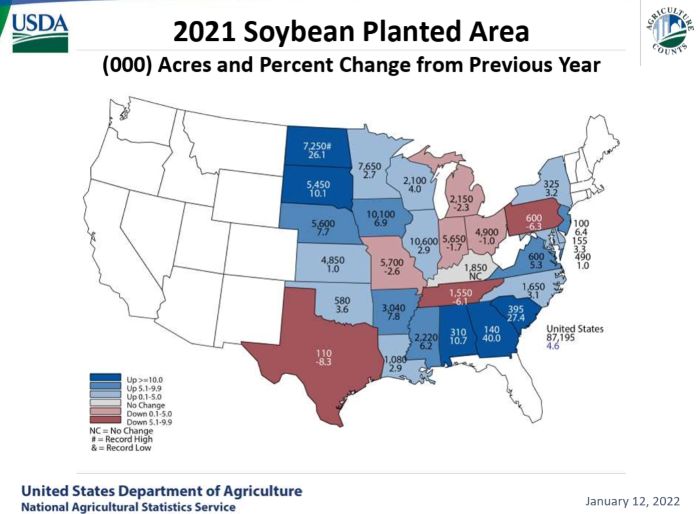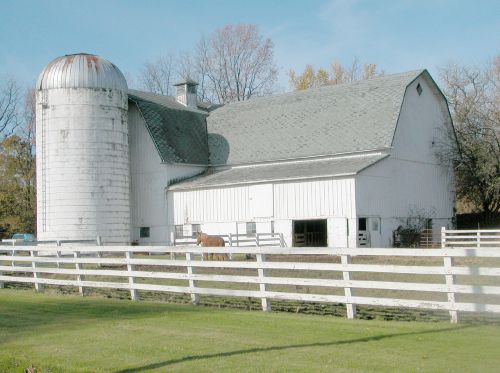

Trump’s tariffs have created a complex and challenging environment for U.S. farmers.

By Matthew A. McIntosh
Public Historian
Brewminate
American farmers are grappling with escalating operational costs, largely attributed to a series of tariffs implemented by Donald Trump’s administration. These tariffs, allegedly aimed at addressing trade imbalances, have intensified financial pressures on the agricultural sector, affecting both input expenses and market access.
Rising Input Costs
One of the most significant impacts has been on fertilizer prices. The U.S. imports approximately 85% of its potash from Canada, and the imposition of a 25% tariff on these imports has led to a substantial increase in costs for farmers. For instance, urea prices have surged by over 40% compared to the previous year, with prices exceeding $420 per ton in early 2025 . This spike in fertilizer costs has strained farmers’ budgets, forcing them to reconsider planting decisions and crop choices.
Agricultural machinery and equipment costs have also risen due to tariffs on imported components. Many farm equipment manufacturers rely on parts from countries like China, and the additional tariffs have increased production costs by an estimated 7-8% . These increased costs are often passed on to farmers, making it more expensive to purchase or maintain essential machinery. This financial burden is particularly challenging for small and medium-sized farms that operate on thin margins.
The tariffs have also led to retaliatory measures from key trading partners, further impacting U.S. farmers. China, a significant importer of American agricultural products, has imposed additional tariffs on U.S. goods, including soybeans and pork. This has resulted in a decline in exports and has forced farmers to find alternative markets or sell their products at lower prices domestically . The uncertainty surrounding international trade relationships has made it difficult for farmers to plan for the future and secure stable income streams.
In response to these challenges, some farmers are exploring alternative strategies to mitigate the impact of rising input costs. This includes adopting precision agriculture technologies to optimize resource use and reduce waste. However, the initial investment required for such technologies can be prohibitive, especially when farmers are already facing financial strain due to increased costs and reduced revenues. The cumulative effect of these tariffs underscores the need for comprehensive policy solutions that support the agricultural sector and address the unintended consequences of trade measures.
Market Access Challenges

China, a major importer of U.S. agricultural products, has imposed additional tariffs on American goods in response to U.S. trade actions. These measures have severely impacted U.S. exporters, particularly those dealing in soybeans and pork. For instance, U.S. soybean exports to China have decreased dramatically, with Brazil now supplying nearly 70% of China’s soybean imports, reducing the U.S. share to approximately 20% . This shift has resulted in significant revenue losses for American farmers who previously relied heavily on the Chinese market.
The European Union (EU) has also responded to U.S. tariffs with its own set of retaliatory measures, targeting American agricultural products such as meat, poultry, fruits, and vegetables . These actions have led to a decline in U.S. agricultural exports to the EU, further exacerbating the challenges faced by American farmers seeking to maintain their presence in international markets.
Additionally, the uncertainty surrounding trade policies has disrupted shipping and logistics, with some shipping companies canceling crossings to the U.S. due to the unpredictability of tariffs and trade relations . This disruption has made it more difficult for U.S. agricultural products to reach global markets, compounding the challenges posed by retaliatory tariffs.
The tariff policies implemented so far have created a complex and challenging environment for U.S. farmers. Retaliatory measures from key trading partners, coupled with disruptions in shipping and logistics, have significantly hindered market access for American agricultural products. These developments underscore the need for strategic policy adjustments to support the agricultural sector and restore stability in international trade relations.
Financial Strain on Farmers
American farmers are enduring severe financial strain as a consequence of the tariff policies imposed by President Donald Trump’s administration. These policies, aimed at reshaping global trade relationships, have sparked a series of retaliatory measures from international trading partners, severely limiting export opportunities. As global demand for U.S. agricultural products has declined, many farmers are facing lower commodity prices, leaving them with thinning profit margins—or in many cases, operating at a loss. With traditional overseas markets like China, Canada, and the European Union implementing counter-tariffs, the financial landscape for U.S. agriculture has become alarmingly unstable.
The increased costs of essential inputs, including fertilizer, fuel, and equipment, have only compounded this financial pressure. Tariffs on imported agricultural chemicals and machinery components have led to price hikes of 30% or more in some regions, forcing farmers to take on more debt just to maintain current production levels. A study published by the American Farm Bureau in early 2025 found that over 62% of surveyed farmers reported increased borrowing as a direct result of tariff-related cost hikes. These added expenses are not accompanied by a rise in market prices for crops and livestock, creating a dangerous imbalance that threatens the financial viability of many farming operations.
Access to credit has also become more difficult, especially for small and medium-sized farms. With banks tightening lending standards amid rising defaults, many farmers are finding it harder to refinance their operations or secure loans for seasonal expenses. According to a report by the Federal Reserve Bank of Kansas City, farm loan delinquencies reached their highest level since 2012 by the first quarter of 2025. Lenders are increasingly cautious, and some are requiring more collateral or higher interest rates, placing further strain on already precarious financial situations. These trends are especially devastating in rural communities where agriculture is the economic backbone.
Federal aid programs designed to provide relief have proven insufficient or inconsistently administered, leaving many farmers in limbo. While emergency assistance was promised in response to the trade war fallout, distribution has been uneven and delayed in many cases. A number of farmers, particularly in states without strong political representation in Washington, have reported being left out of crucial support programs altogether. Some have been forced to auction off equipment or sell parts of their land to cover short-term debts, a move that can jeopardize long-term viability and lead to generational farm losses.
Perhaps most troubling is the psychological toll that financial uncertainty is taking on farmers and their families. Mental health hotlines across the Midwest have reported a surge in calls from farmers expressing anxiety, depression, and fear about losing everything they’ve worked for. Farming is not just a business—it’s a way of life deeply rooted in family legacy and identity. With economic survival hanging in the balance due to political decisions beyond their control, farmers are facing an emotional crisis alongside the financial one. The combination of stress, debt, and dwindling options has created a perfect storm for rural distress.
Impact on Small and Medium-Sized Farms

Small and medium-sized farms across the United States are grappling with significant challenges stemming from Trump’s tariff policies. These tariffs, aimed at reshaping global trade dynamics, have inadvertently placed disproportionate pressure on smaller agricultural operations, which often lack the financial resilience of larger agribusinesses.
One of the primary impacts of the tariffs has been the escalation of input costs. Tariffs on imported agricultural equipment and supplies have led to increased prices for essential farming tools and materials. For small and medium-sized farms operating on tight margins, these additional costs can be debilitating. According to a report by the Nebraska Examiner, farmers have expressed concerns about being “powerless to do anything except take what comes out in the wash,” highlighting the sense of helplessness in the face of rising expenses .
Moreover, the tariffs have disrupted established export markets, particularly with key trading partners like China. Retaliatory tariffs have led to decreased demand for U.S. agricultural products abroad, resulting in surplus supplies and plummeting prices domestically. This scenario has been especially detrimental to small and medium-sized farms that rely heavily on export markets for their revenue. The Guardian reports that farmers are anxious about the long-term implications of these trade tensions, fearing that the loss of market share to competitors like Brazil could have lasting effects .
Compounding these challenges are cuts to federal programs that previously provided support to small and medium-sized farms. The Trump administration’s decision to slash funding for initiatives like the Local Food Purchase Assistance and the Local Food for Schools programs has removed critical avenues for small farmers to sell their products. The Louisiana Illuminator highlights the case of Over the Moon Farm in Iowa, which benefited from these programs before the funding cuts threatened its financial stability .
The cumulative effect of increased input costs, disrupted export markets, and reduced federal support has led to a precarious financial situation for many small and medium-sized farms. Without adequate safety nets or the ability to absorb these shocks, these farms face the risk of consolidation or closure. As the agricultural landscape continues to evolve under the weight of these policies, the sustainability of small and medium-sized farms remains in jeopardy.
Originally published by Brewminate, 06.02.2025, under the terms of a Creative Commons Attribution-NonCommercial-NoDerivatives 4.0 International license.


